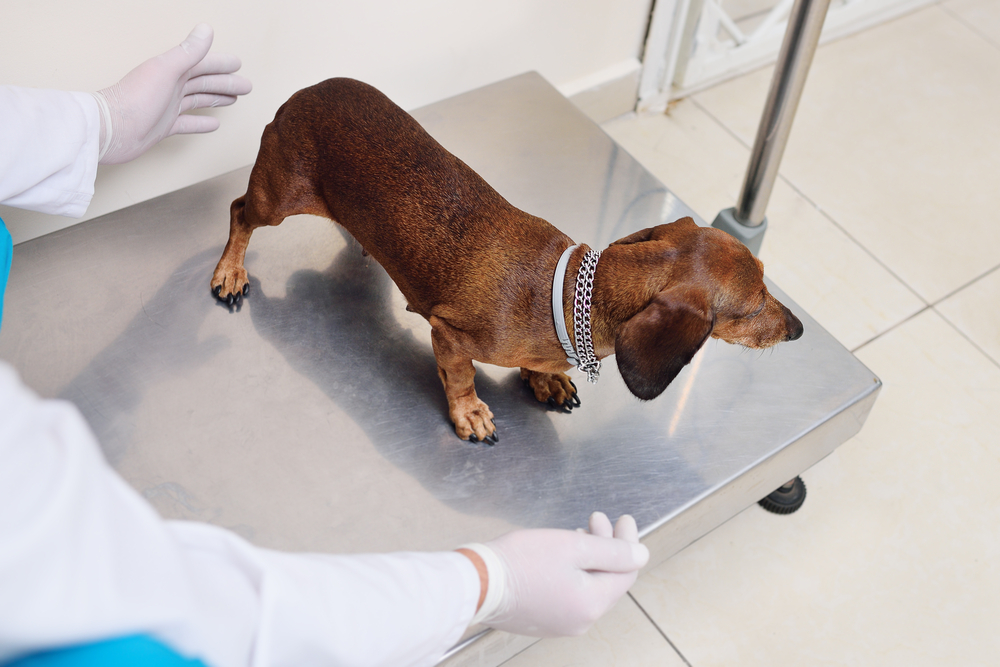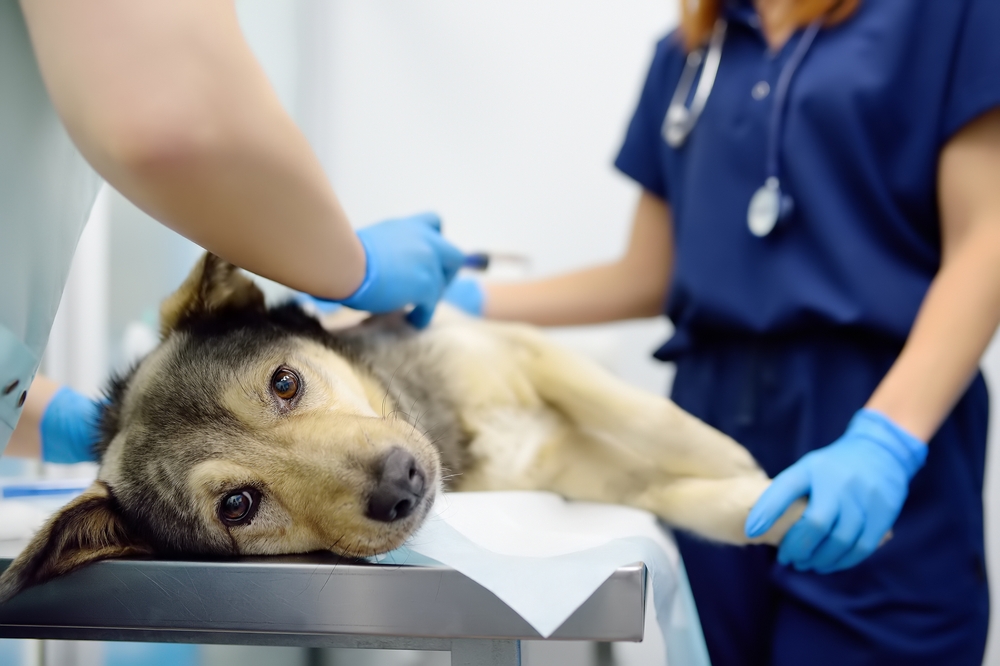Dogs, our beloved four-legged companions, come with their own set of genetic blueprints that make each breed unique. However, lurking within these blueprints can be certain genetic disorders that affect their health and well-being. Understanding these genetic predispositions is crucial for any dog owner or enthusiast aiming to provide the best care possible. So, let’s dive into the world of canine genetics and uncover some of the most common genetic disorders in dogs.
1. Hip Dysplasia

Hip dysplasia is a prevalent condition often seen in larger breeds such as German Shepherds and Labrador Retrievers. This genetic disorder occurs when the hip joint fails to develop properly, leading to arthritis and pain over time. Early diagnosis and management are essential to prevent severe discomfort and mobility issues in affected dogs. According to the American Kennel Club, regular vet check-ups and weight management can significantly improve the quality of life for dogs with this condition.
The symptoms of hip dysplasia can vary from mild discomfort to severe pain, and they usually worsen as the dog ages. While surgery can be an option for severe cases, many dogs manage well with physical therapy and medication. Genetic screening before breeding can also help reduce the prevalence of this disorder in future generations. Educating yourself on the signs and treatment options is vital for any current or prospective dog owner.
2. Brachycephalic Obstructive Airway Syndrome (BOAS)

Brachycephalic Obstructive Airway Syndrome, commonly seen in breeds like Bulldogs and Pugs, is a condition that affects the breathing of dogs with flat faces. This disorder is a result of anatomical abnormalities that obstruct the airway, causing breathing difficulties. As recommended by the VCA Animal Hospitals, preventive measures such as weight control and avoiding stress can help manage BOAS symptoms effectively.
Dogs with BOAS often exhibit loud breathing, snoring, and even exercise intolerance due to decreased airflow. In severe cases, surgical intervention might be necessary to remove obstructions or enlarge airways. Owners of brachycephalic breeds need to be vigilant about environmental factors like heat and humidity, which can exacerbate symptoms. While these breeds are undeniably charming, awareness and proactive care are key to ensuring they breathe easy.
3. Progressive Retinal Atrophy (PRA)

Progressive Retinal Atrophy is a group of genetic diseases that lead to blindness due to the degeneration of the retina. This disorder affects many breeds, including Poodles and Cocker Spaniels, and is typically inherited. Genetic testing can identify carriers and help breeders make informed decisions to reduce the incidence of PRA.
Initial symptoms of PRA include night blindness, which gradually progresses to complete blindness. Regular eye examinations can help diagnose PRA early, allowing for lifestyle adjustments to aid affected dogs. While there is currently no cure, dogs can adapt to their vision loss with the help of their keen senses and a stable environment. Understanding PRA is crucial for owners to accommodate their pets’ needs and maintain their quality of life.
4. Von Willebrand Disease

Von Willebrand Disease is a genetic bleeding disorder similar to hemophilia in humans, reports Medical News Today. It affects various dog breeds, including Doberman Pinschers and Shetland Sheepdogs, and is caused by a deficiency in von Willebrand factor, a protein essential for blood clotting.
Dogs with this condition may exhibit symptoms such as frequent nosebleeds, prolonged bleeding after surgery, or excessive bleeding from minor injuries. Diagnosis is typically made through blood tests, and treatment often involves managing symptoms and avoiding situations that could lead to injuries. Owners should work closely with veterinarians to ensure their dogs lead healthy, balanced lives despite this condition.
5. Epilepsy

Epilepsy is one of the most common neurological disorders in dogs and can be inherited or acquired. Breeds like Beagles, Belgian Tervurens, and Labrador Retrievers are more predisposed to this condition, characterized by recurrent seizures.
Managing epilepsy involves medication and lifestyle changes to minimize the frequency and severity of seizures. While witnessing a seizure can be distressing, understanding the condition helps owners respond calmly and effectively. Regular veterinary consultations are essential to tailor a treatment plan that meets the specific needs of the affected dog.
6. Hypothyroidism

Hypothyroidism is a disorder where the thyroid gland fails to produce enough hormones, leading to a slowdown in metabolism. Breeds like Golden Retrievers and Boxers are particularly susceptible to this condition.
Symptoms include weight gain, lethargy, and a dull coat, often leading to misdiagnosis as normal aging. Treatment typically involves hormone replacement therapy, which can significantly improve the dog’s quality of life. Awareness of this condition can help owners seek timely veterinary advice and manage their dog’s health proactively.
7. Cushing’s Disease

Cushing’s Disease, or hyperadrenocorticism, occurs when the adrenal glands produce excessive cortisol. This condition is common in older dogs and certain breeds like Poodles and Dachshunds.
Symptoms include increased thirst and urination, a pot-bellied appearance, and hair loss. Diagnosis requires specialized testing, and treatment options vary from medication to surgery, depending on the underlying cause. Early detection is key to managing Cushing’s Disease and ensuring affected dogs maintain a high quality of life.
8. Patellar Luxation

Patellar luxation is a condition where the kneecap dislocates or moves out of place, common in small breeds like Chihuahuas and Yorkshire Terriers. This genetic disorder can cause varying degrees of lameness and discomfort.
Treatment options range from physical therapy and weight management to surgery in severe cases. Regular monitoring by a vet can help manage the condition and prevent complications. Owners should be aware of the signs of patellar luxation to provide timely care and support for their pets.
9. Deafness

Deafness in dogs can be congenital or acquired, with breeds like Dalmatians and Australian Shepherds being more predisposed to congenital hearing loss. This condition poses challenges in training and communication but doesn’t affect a dog’s ability to lead a fulfilling life.
Training methods such as hand signals can help improve communication with deaf dogs. Regular hearing tests and environmental adjustments are vital for managing this condition. Understanding and accommodating a deaf dog’s unique needs can enhance their quality of life significantly.
10. Heart Disease

Heart disease in dogs can be genetic or acquired, with Cavalier King Charles Spaniels being particularly prone to mitral valve disease. This condition can lead to heart failure if not managed appropriately.
Symptoms include coughing, fatigue, and difficulty breathing. Early diagnosis and management are crucial to slow disease progression and maintain a good quality of life. Regular veterinary check-ups and appropriate medication can help manage symptoms effectively.
11. Allergies

Allergies in dogs can be genetic and manifest as skin irritations, food sensitivities, or respiratory issues. Breeds like Bulldogs and West Highland White Terriers are more susceptible to this condition.
Identifying the allergen and managing exposure is crucial in treating allergies. Treatment may involve dietary changes, medications, or allergy shots. Understanding the triggers and symptoms of allergies can help owners provide relief and improve their dogs’ well-being.
12. Intervertebral Disc Disease (IVDD)

Intervertebral Disc Disease is a condition where the discs between the vertebrae of the spine degenerate or herniate, common in breeds like Dachshunds and Beagles. This genetic disorder can lead to pain, nerve damage, and even paralysis.
Treatment options range from medications and physical therapy to surgery in severe cases. Early detection and intervention are key to managing IVDD effectively. Dog owners should be vigilant about any changes in mobility or behavior that could indicate this condition.
13. Cancer

Cancer is a significant health concern in dogs, with certain breeds like Boxers and Golden Retrievers being more predisposed. Genetic factors play a role in the development of cancers such as lymphoma and mast cell tumors.
Early detection through regular vet visits and screenings is crucial for effective treatment. Treatment options vary and may include surgery, chemotherapy, or radiation. Being informed about the risk and signs of cancer can help dog owners take proactive steps in managing their pet’s health.
